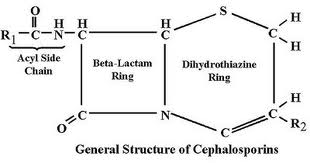ANTIVIRAL AGENTS
ANTIVIRAL AGENTS: Viruses are acellular, intracellular obligatory parasites so the chemotherapeutic agents must enter the host's cell to attack the viruses. Besides, virus don't have complex structure or cell wall & membrane & they are only involved in few physiological activity other than replication. Therefore,there are limited antiviral agents & must antiviral agents interrupt the viral replication. Amantadine & Zanamivir( prevents attachment of Influenza virus to host cell membrane). Acyclovir & Ganciclovir ( They are incorporated into viral DNA during replication cycle of HSV & CMV). Anti-HIV drugs like Nevirapine( they binds & inhibits reverse transcriptase) Interferons: They are small glycoproteins cells ...









